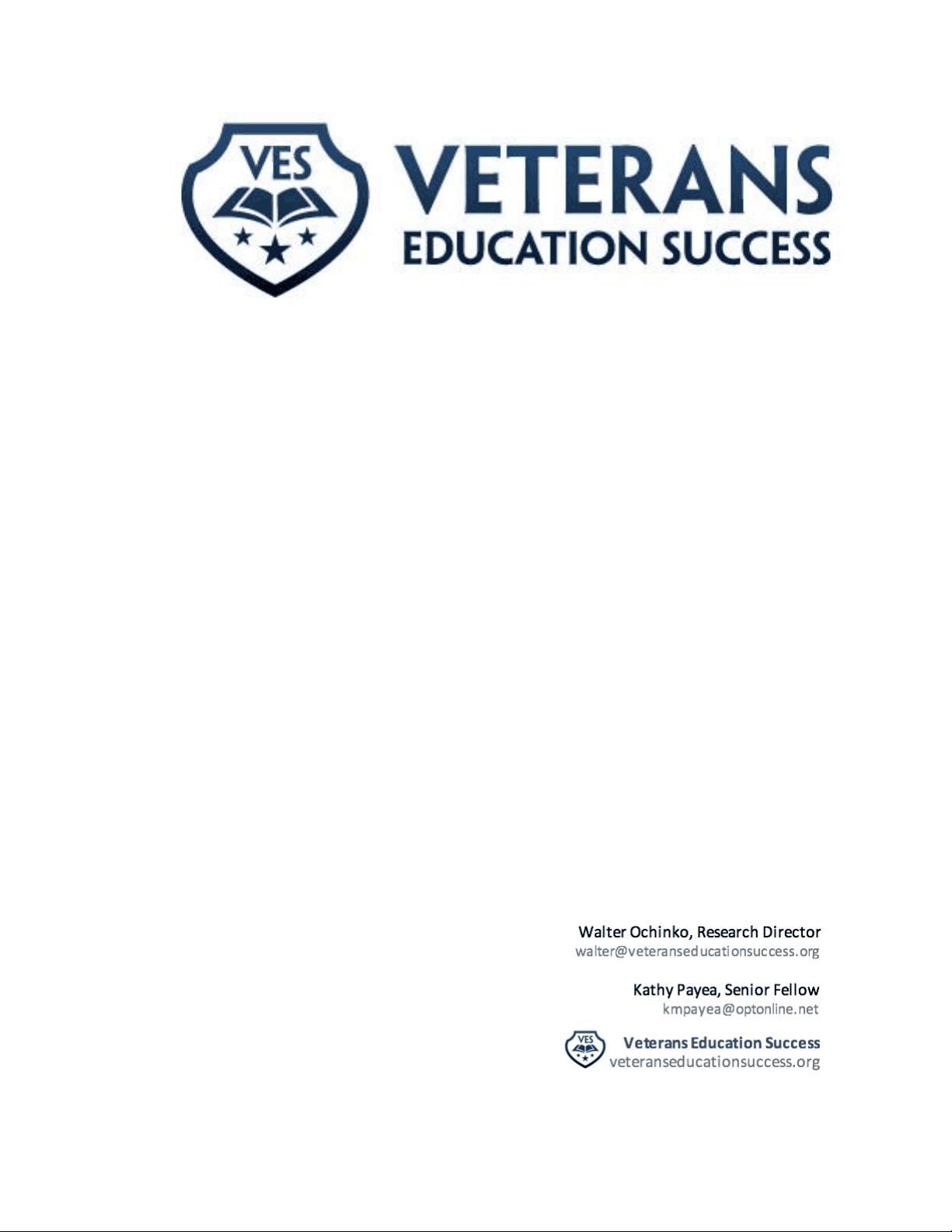

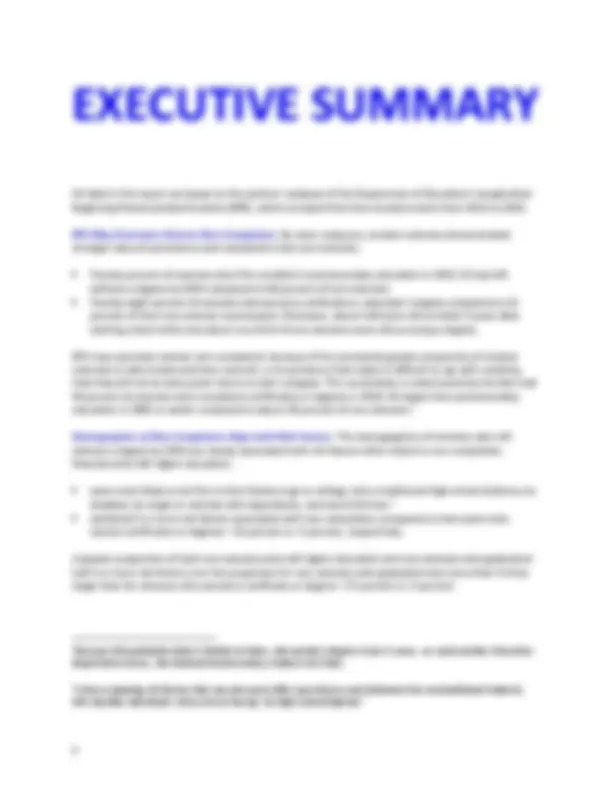
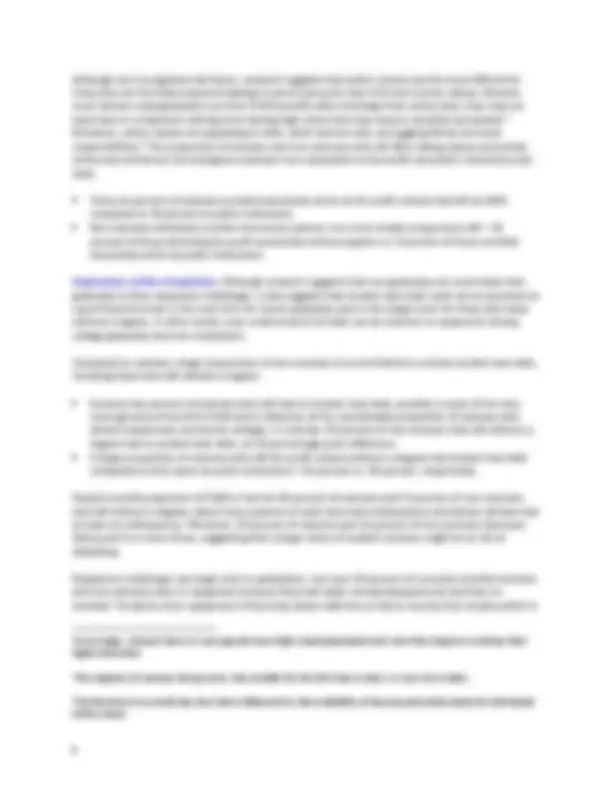

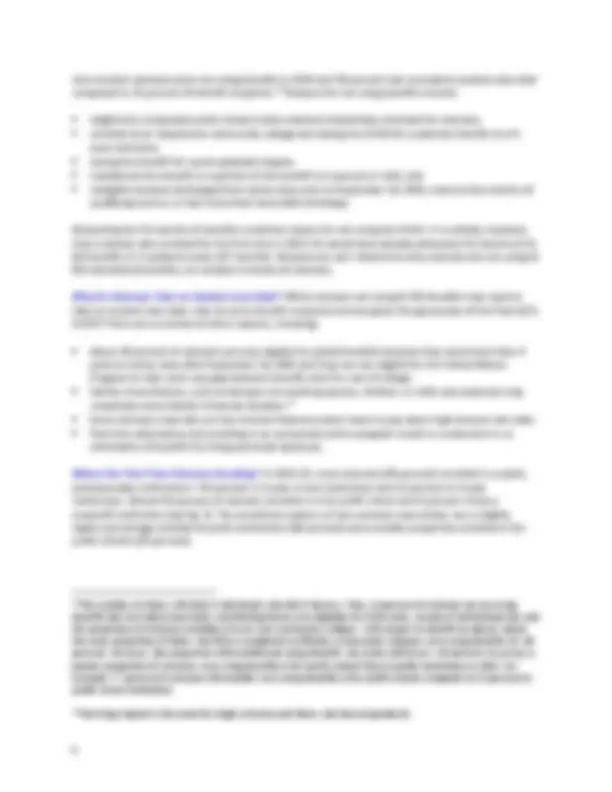
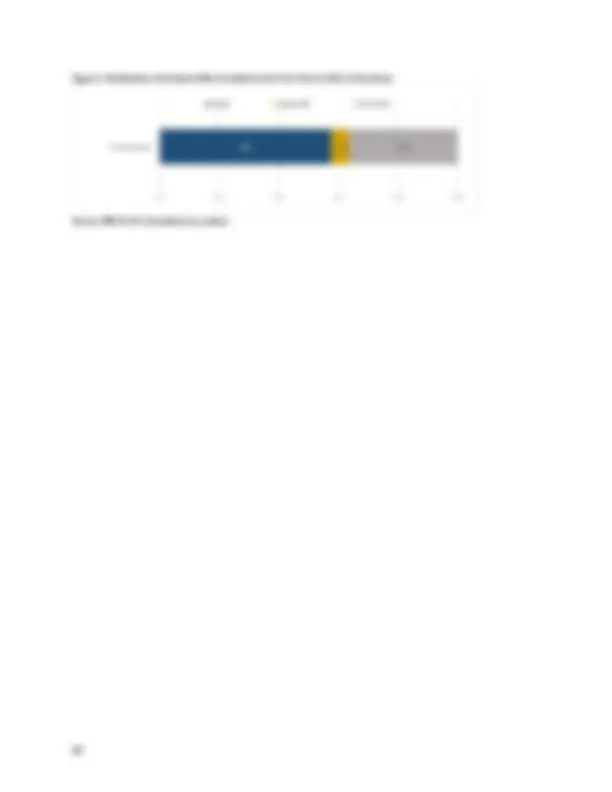
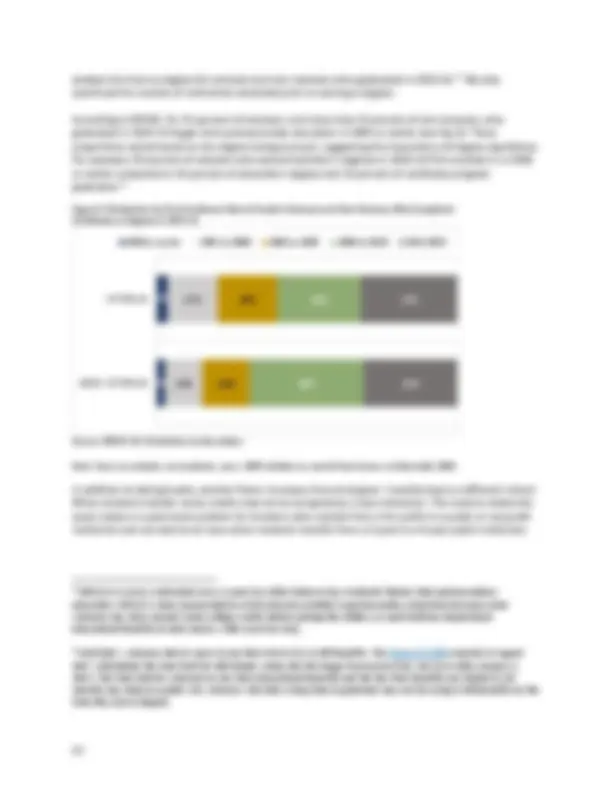

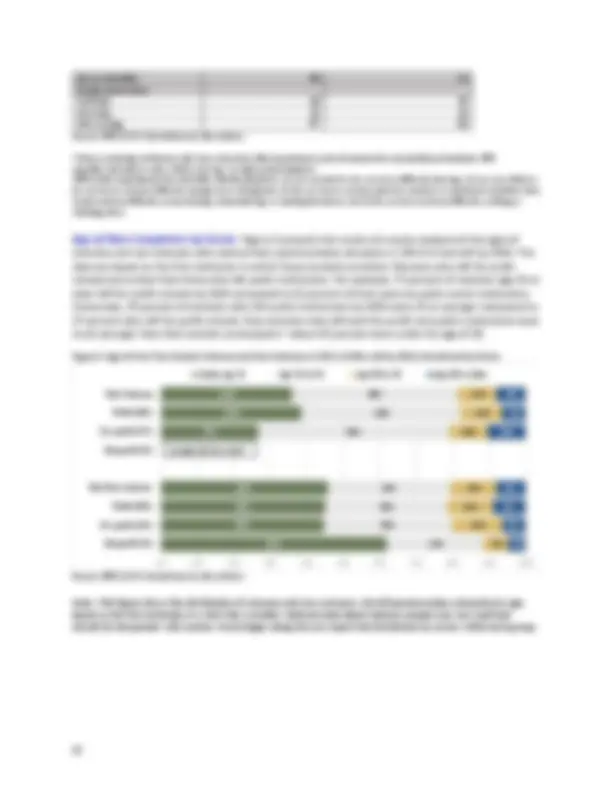
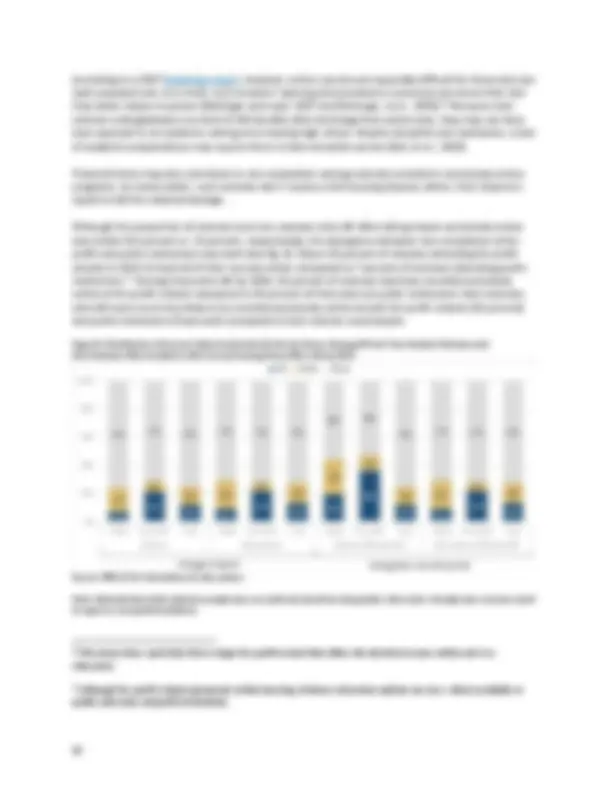
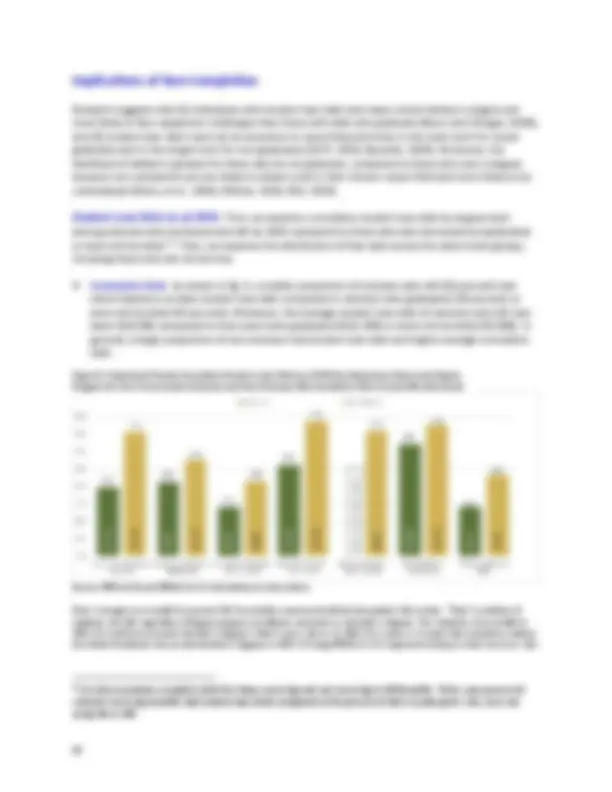
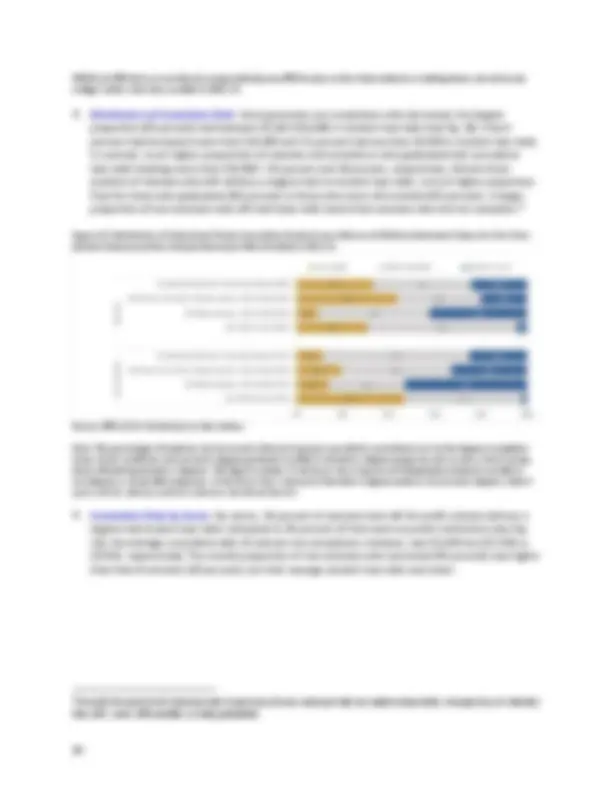
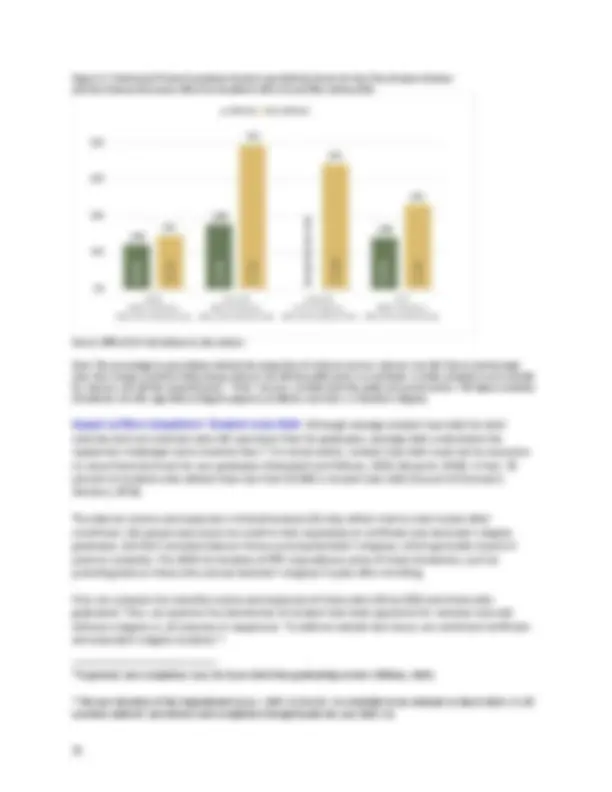
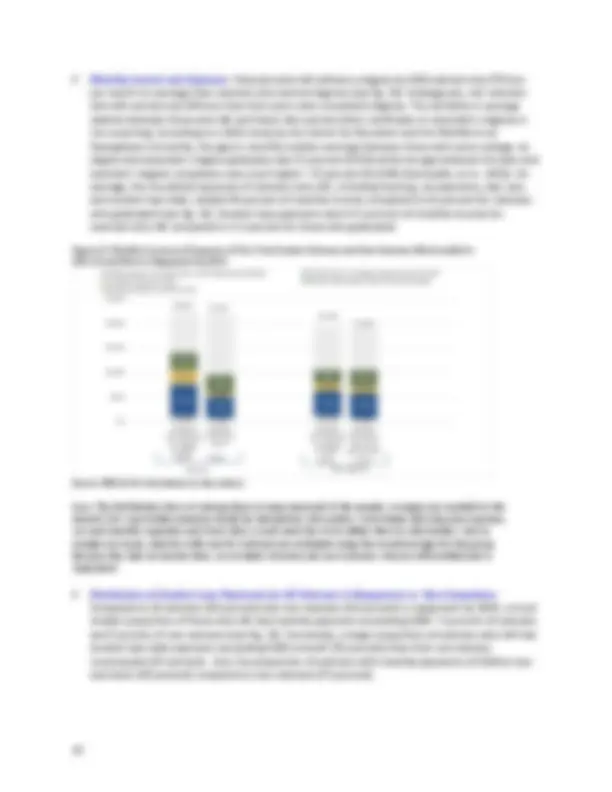
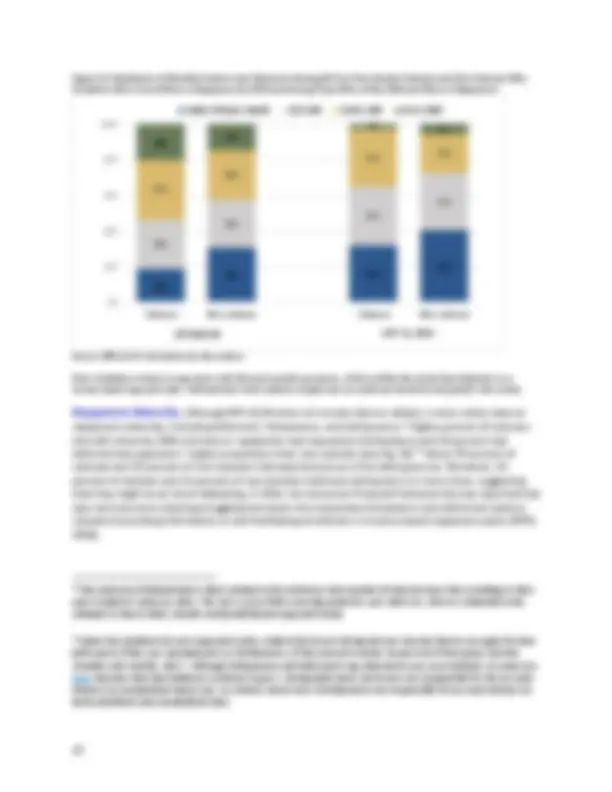
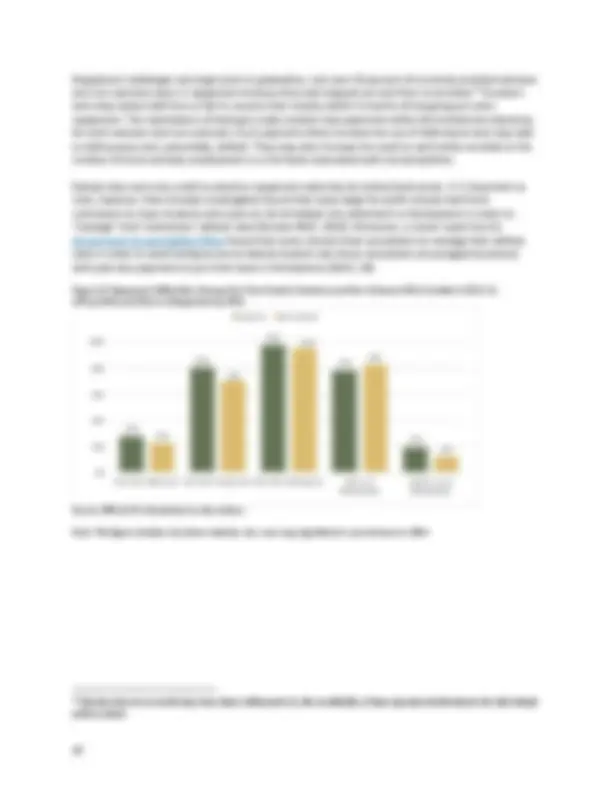
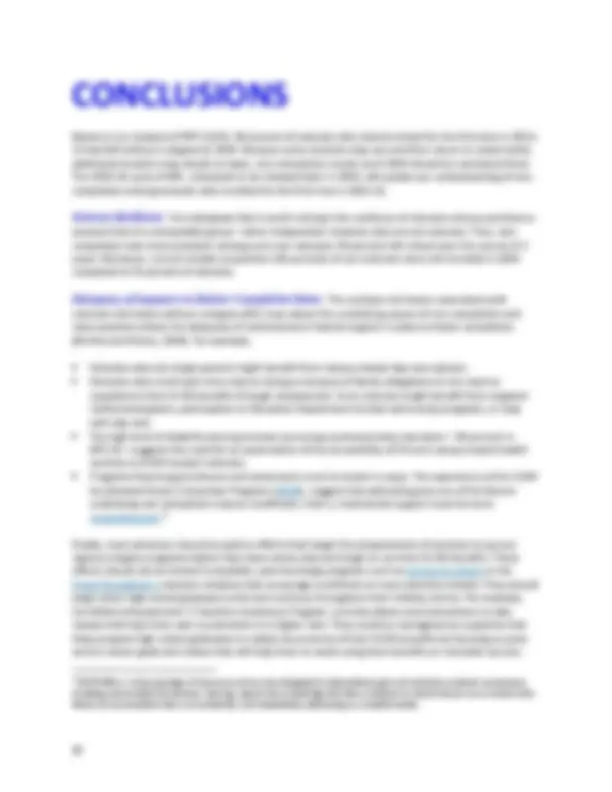
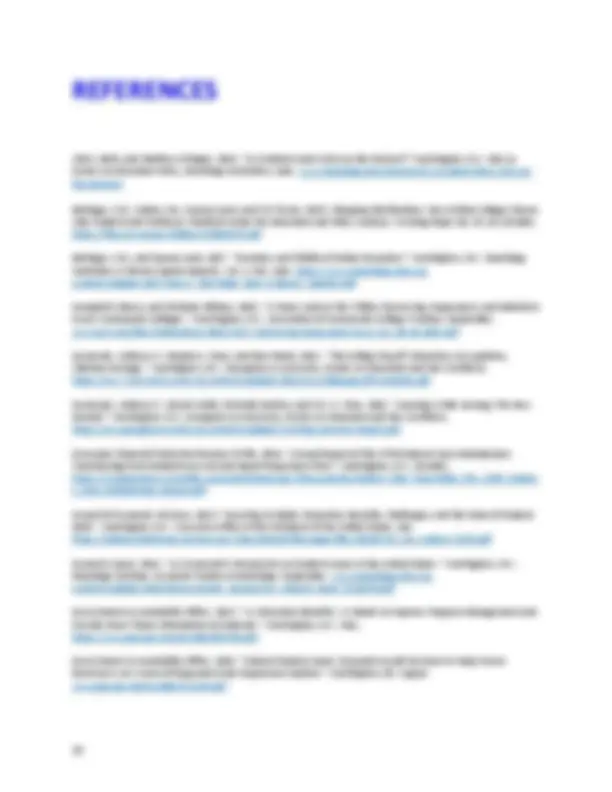

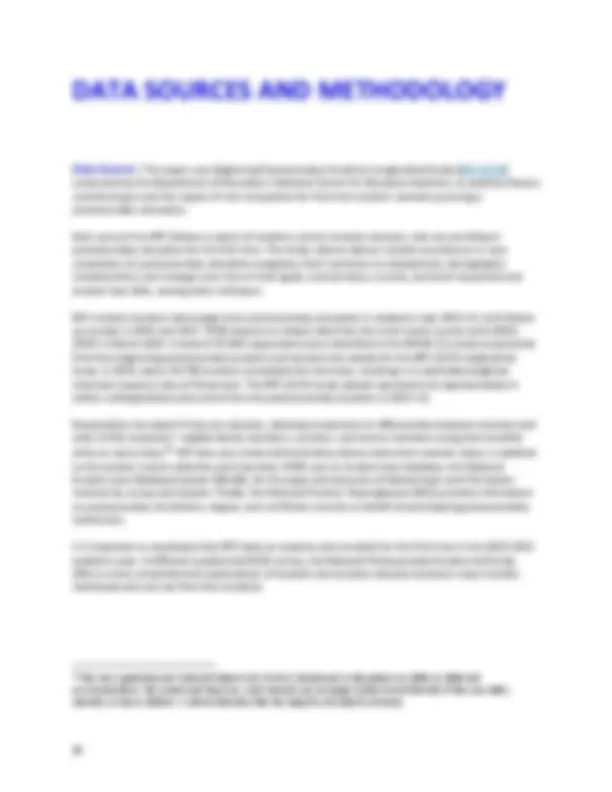
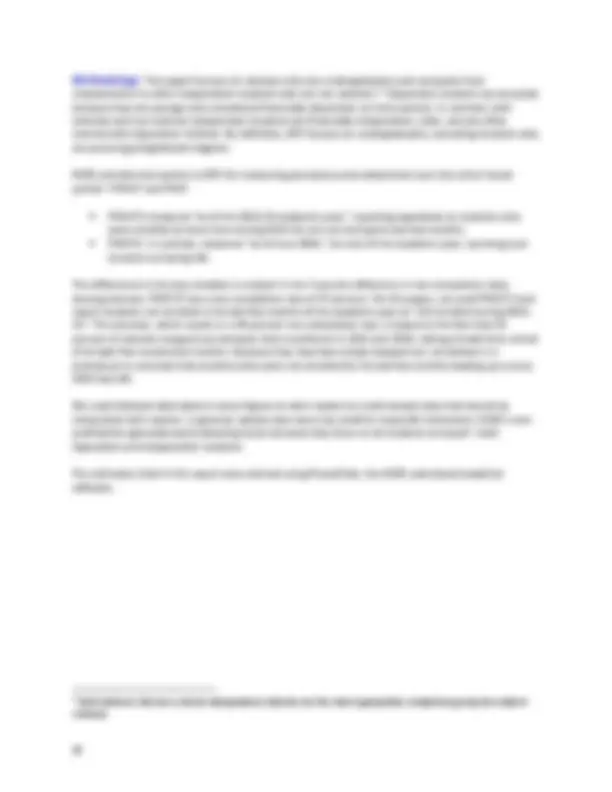


Study with the several resources on Docsity

Earn points by helping other students or get them with a premium plan


Prepare for your exams
Study with the several resources on Docsity

Earn points to download
Earn points by helping other students or get them with a premium plan
Community
Ask the community for help and clear up your study doubts
Discover the best universities in your country according to Docsity users
Free resources
Download our free guides on studying techniques, anxiety management strategies, and thesis advice from Docsity tutors
This document by Veterans Education Success explores the issue of non-completion among veterans in postsecondary education, examining contributing factors such as student loan debt and time-to-degree. The report also discusses implications for veterans and non-veterans, including financial challenges and access to VA and campus-based health services.
What you will learn
Typology: Lecture notes
1 / 29

This page cannot be seen from the preview
Don't miss anything!






















Postsecondary Non-Completion Among Veterans: Contributing Factors and Implications
ABOUT VETERANS EDUCATION SUCCESS Veterans Education Success (VES) is a nonprofit organization dedicated to protecting and defending the integrity and promise of the GI Bill and other federal education programs for veterans and servicemembers.^1 VES provides:
All data in this report are based on the authors’ analyses of the Department of Education’s longitudinal Beginning Postsecondary Students (BPS), which surveyed first-time students twice from 2011 to 2014. BPS May Overstate Veteran Non-Completion. By most measures, student veterans demonstrated stronger rates of persistence and completion than non-veterans.
Although not a recognized risk factor, research suggests that online courses are the most difficult for those who are the least prepared leading to worse outcomes than brick and mortar classes. Because most veteran undergraduates use their GI Bill benefits after discharge from active duty, they may not have been in a classroom setting since leaving high school and may require remedial coursework.^4 Moreover, online classes are appealing to older, adult learners who are juggling family and work responsibilities.^5 The proportion of veterans and non-veterans who left after taking classes exclusively online was similar but the divergence between non-completion at for-profit and public institutions was stark.
BACKGROUND This paper uses Beginning Postsecondary Students (BPS), a longitudinal survey conducted by the Department of Education’s National Center for Education Statistics (NCES) to examine factors contributing to and the impact of non-completion for “ first-time ” student veterans pursuing a postsecondary education—certificates, associate’s, or bachelor’s degrees.^7 BPS includes student veterans who were first surveyed during the 2011-12 academic year and again in 2013- 14. Because students surveyed by BPS for a second time in 2014 had only 3-years to earn a degree, we used the Department’s National Postsecondary Student Aid Study (NPSAS:16) to analyze time-to-degree from students’ first enrollment date, obtaining a longer-term perspective.^8 For comparison, we include data on non-veteran independent students, a group comparable to veterans that we refer to as “non- veterans.”^9 In general, both veterans and such non-veterans are financially independent, older, and are often married with dependent children. Because the focus is on veterans, we highlight the differences between veterans and non-veterans only when we believe they merit attention. See “Data Sources and Methodology” at the end of this paper for a more detailed discussion of BPS and our methodology. Use of GI Bill Benefits****. Among veterans who used the GI Bill during the 2011-12 school year, about two- thirds received Post-9/11 GI Bill benefits; the remaining one-third continued to rely on older benefit programs, primarily the Montgomery GI Bill.^10 Under the Montgomery GI Bill, veterans receive a monthly benefit that can be used for tuition, housing, or other education related expenses. That payment would more than cover in-state tuition and fees at a community college or public 4-year institution but not tuition and fees at for-profit or nonprofit schools.^11 In contrast, the Post-9/11 GI Bill pays tuition and fees directly to the school; during the 2011- (^7) Each cycle of the BPS follows a cohort of students who are enrolled in their first year of postsecondary education. For example, it would exclude a student who had transferred from or earned credits toward a certificate or degree at a different institution. The proportion of veterans who began school in 2011-12 and who completed a bachelor’s degrees by 2014 is less than 1 percent; most students pursuing bachelor’s degrees are still enrolled. (^8) BPS is a subset of first-time students who participated in the NPSAS survey in 2011-12. However, we used NPSAS: 16 to examine time-to-degree from student’s first enrollment date. (^9) The Education Department believes that non-veteran independent students are the most appropriate comparison group for veterans. (^10) From fiscal years 2009 through 2012, the proportion of eligible veterans using the Post-9/11 GI Bill to pursue a postsecondary education increased from 6 percent to 63 percent (GAO, 2013). When the benefit was first implemented, only 2 months remained in fiscal year 2009. Since 2012, the proportion of veterans using the Post- 9/11 benefit has continued to increase at the expense of Montgomery GI Bill enrollment. (^11) In 2011-12, veterans using the Montgomery GI Bill received $1,473 a month for full-time attendance, totaling $13,257 over a 9-month academic year. According to the College Board, average tuition and fees were about
12 academic year, covered in-state tuition at public institutions and up to a cap of $17,500 at for-profit schools and nonprofit institutions.^12 In addition, any gap between a school’s tuition and the Post-9/ benefit can be reduced or eliminated if the school participates in the Yellow Ribbon Program.^13 Under this voluntary program, the Department of Veterans Affairs (VA) matches the amount that the school provides to help close or eliminate any tuition gap.^14 Unlike the Montgomery GI Bill, the Post-9/ benefit offers a monthly housing stipend and pays $1,000 toward the cost of books.^15 In addition to the GI Bill, veterans may qualify for Pell Grants and/or take out student loans. The Post-9/11 benefit does not reduce veterans’ eligibility for federal student loans. Both benefit programs pay for 36 months of postsecondary education.^16 The benefit level is based on months-of-service. For example, veterans eligible for the full Post-9/11 benefit must have served for 3 years after September 10, 2001. If they served less than 3-years, the benefit is prorated in 10 percent increments from 40 percent up to 90 percent. Thus, tuition, housing, and book payments for a veteran who qualifies at the 40 percent level are reduced by 60 percent. According to the VA, about 30 percent of veterans who qualify for the Post-9/11 GI Bill receive less than 100 percent of the benefit. Two other factors can reduce the amount of the benefit—less than full-time attendance and enrollment in an exclusively-online program.^17 For veterans attending school less than full-time (12 credit hours) housing expenses and the book stipend are prorated. Those pursuing 6 credits or less receive no housing stipend. Veterans attending classes exclusively online receive housing expenses equal to half the national average. Not All Enrolled Veterans Are Using the GI Bill****. Not all veterans pursuing a postsecondary degree are using GI Bill benefits, a factor which may contribute to student loan debt. Overall, 37 percent of first- $3,100 at a community college and about $7,770 at a public 4-year institution in 2011-12 (current dollars). For the 2018 - 19 academic year, the monthly payment is $1,994. (^12) The tuition cap is adjusted annually for inflation and is $23,672 for the 2018-2019 academic year. (^13) In Fiscal Year 2017, eighteen percent of schools that enroll 55 percent of GI Bill users participated in the Yellow Ribbon Program. However, only 4 percent of GI Bill recipients received Yellow Ribbon benefits. See “Veterans Initiative” and “Quick Facts” tabs of the “download data on all schools” link on the homepage of VA’s GI Bill Comparison Tool. (^14) Only veterans who qualify for 100 percent of the Post-9/11 benefit are eligible for the Yellow Ribbon program. Schools may limit the number of veterans who participate in the program or the amount they contribute. (^15) The monthly housing stipend is based on an enlisted rank of E-5 with dependents and is adjusted for the zip code of the school that the veteran attends. For example, the 2018 monthly allowance is $1,095 for Boise, Idaho, but $3,669 for New York City. According to NCES, the average cost of books during the 2012-13 academic year ranged from about $1,200 at public and nonprofit schools to about $1,700 at for-profit schools. The housing stipend can be used to cover any ongoing expenses such as food, day care, commuting expenses, etc. (^16) Thirty-six months is the equivalent of four, 9-month-long academic years—the time it should take to earn a 4- year bachelor’s degree. Veterans must attend full-time in order to graduate in 36 months. (^17) Full- or part-time attendance exhaust equivalent months of eligibility.
Figure 1: Distribution of Veterans Who Enrolled for the First Time in 2011- 12 by Sector Source : BPS:12/14. Calculations by authors. 58% 6% 37% 0% 20% 40% 60% 80% 100% Total Veterans Public Nonprofit For-profit
FINDINGS
BPS data may overstate the impact of non-completion because many students take a temporary break (referred to as a “stop out”) or reenroll after a longer absence. The impact of such stop outs on completion is evident in the long-time-to-degree for both veterans and non-veterans, which suggests that some students persist and eventually earn a certificate or degree.
years compared to 40 percent of non-veterans (see fig. 2). On average, both veterans and non-veterans left after fewer than 10 months. Twenty percent of veterans left both for-profit schools and public institutions without a degree. However, far fewer veterans were still enrolled at for-profit schools ( percent) compared to their counterparts attending public institutions (68 percent). Figure 2 also shows that a greater proportion of veterans earned a certificate or degree by 2014 (28 percent) or were still enrolled (51 percent), compared to non-veterans (23 percent and 36 percent, respectively). Figure 2: Distribution of Attainment and Persistence as of 2014 Among First-Time Student Veterans and Non-Veterans Who Enrolled in 2011-12 by Sector Source : BPS: 1 2/14. Calculations by the authors. Note : “No degree, still enrolled” includes students who were enrolled for part of the year in 2013-14. The 0.5 percent of veterans who began school in 2011-12 and who completed a bachelor’s degrees by 2014 is shown in burgundy; most students pursuing bachelor’s degrees are still enrolled. We excluded the 2 percent of non-degree or other program students. Sample sizes were too small to report on nonprofit institutions. Graduation rates for certificates and associate’s degrees were higher at for-profit schools than at public institutions. Several factors need to be kept in mind when comparing such graduation rates. Based on our analysis of College Scorecard data for 2015-16, 63 percent students earned certificates at 2-year for- profits while 72 percent of 2-year public graduates earned associate’s degrees; moreover, few 4-year 18% 5% 37% 16% 7% 30% 21% 10% 7% 15% 7% 6% 11% 5% 51% 68% 27% 36% 44% 22% 43% 20% 20% 20% 40% 43% 36% 29% 0% 10% 20% 30% 40% 50% 60% 70% 80% 90% 100% Total Public For-profit Nonprofit Total Public For-profit Nonprofit Veterans Non-veterans Attained certificate Attained associate's degree Attained bachelor's degree No degree, still enrolled No degree, left without return Sample size too small
analyze the time-to-degree for veterans and non-veterans who graduated in 2015-16.^21 We also examined the number of institutions attended prior to earning a degree. According to NPSAS: 16, 41 percent of veterans, and more than 32 percent of non-veterans, who graduated in 2015- 16 began their postsecondary education in 2005 or earlier (see fig. 4). These proportions varied based on the degree being pursued, suggesting the importance of degree aspirations. For example, 50 percent of veterans who earned bachelor’s degrees in 2015-16 first enrolled in in 2005 or earlier compared to 36 percent of associate’s degree and 33 percent of certificate program graduates.^22 Figure 4: Distribution by First Enrollment Date of Student Veterans and Non-Veterans Who Completed Certificates or Degrees in 2015- 16 Source : NPSAS: 16. Calculations by the authors Note : Years are calendar, not academic, years. 2015 includes any month from January to December 2015. In addition to taking breaks, another factor increases time-to-degree—transferring to a different school. When students transfer some credits may not be accepted by a new institution. The need to retake the same classes is a particular problem for students who transfer from a for-profit to a public or nonprofit institution and can also be an issue when students transfer from a 2-year to a 4-year public institution (^21) NPSAS is a survey conducted every 4-years to collect data on how students finance their postsecondary education. NPSAS is more representative of all veterans enrolled in postsecondary education because some veterans may have earned some college credits before joining the military or used Defense Department educational benefits to take classes while on active duty. (^22) Until 2017, veterans had 15 years to use their Post-9/11 GI Bill benefits. The Forever GI Bill, enacted in August 2017, eliminated the time limit for individuals whose last discharge from active duty was on or after January 1,
(GAO, 2017).^23 Among all first-time student veterans beginning in 2011-12, 27 percent had enrolled in more than one institution by June 2016, compared to 15 percent of non-veteran students.
the first time in 2011-12, the 20 percent of veterans who had left by 2014 were more likely to have been older, male, racial/ethnic minority, first in their family to go to college, without a high-school diploma, disabled, single or married with dependents, and working full-time (see table 1).^24 As discussed later in this paper, several of these characteristics are associated with an increased risk of non-completion. Though not shown in table 1, non-veteran first-time students differed from veterans in several ways. More non-veterans were:
that can negatively affect persistence and attainment. These factors have been used by the Education Department to determine the risk of non-completion among nontraditional students (Molina and Morse, 2015). The seven factors are: delayed enrollment, no high school diploma, part-time enrollment, financially independent, have dependents, single parents, and full-time employment. We used five of these factors plus three others—first generation student, attendance at two or more institutions, and disability status—to assess the non-completion risk characteristics of student veterans and non-veterans in 2011-12.^25 Compared to veterans, a greater proportion of non-veterans had 5 of the 8 risk factors—no high school diploma, enrolled part-time, had dependents, were single parents, and worked full-time while enrolled (see fig. 6). For example, 2 3 percent of non-veterans worked full-time compared to 20 percent of veterans. Research suggests that there is a complex relationship between working and student loan debt. A smaller proportion of those who work graduate with significant amounts of debt, and yet working too much while enrolled in a postsecondary program increases the likelihood of non- completion (Carnevale, et.al. , 2015). With respect to the three other risk factors, the proportion of veterans and non-veterans sharing one risk factor was about the same but veterans were more at risk than non-veterans regarding the other two. Veterans and non-veterans were about equally likely to be first-generation students. The risk of non-completion for first-generation students is amplified because they share many of the risk characteristics associated with persistence and attainment challenges (Schauer, 2005). However, a much larger proportion of veterans than non-veterans had a disability (30 percent vs. 17 percent) or attended two or more institutions (27 percent vs. 15 percent). Disabled individuals are more likely to drop out than those without a disability (Velez, et.al., 2016). (^25) We did not use two factors: (1) financially independent—most GI Bill eligible veterans are no longer dependent on their parents; and (2) delayed enrollment—most veterans “delay postsecondary enrollment by more than 12 months” because they were on active duty for several years after high school and may not begin using their benefits immediately after separation from the military.
Figure 6: Distribution of Non-Completion Risk Factors Experienced by Student Veterans and Non-Veterans Who Enrolled for the First Time in 2011- 12 Source : BPS:12/14. Calculations by the authors. Note : BPS classifies individuals with a GED as having “no high school diploma” when defining risk factors. Compared to those who graduated, veterans who left without a degree were much more likely to be associated with multiple risk factors (fig. 7). Thus, 21 percent of veterans who left school by 2014 without a degree had five or more non-completion risk factors compared to 4 percent of veterans who graduated. A greater proportion of non-veterans had 5 or more risk factors, both among those who left (29 percent) and those who graduated (17 percent). Figure 7: Distribution of Risk Factors by 2014 Completion Status for First-Time Student Veterans and Non-Veterans Who Enrolled in 2011 - 12 Source : BPS:12/14. Calculations by the authors. Note : Italicized data labels indicate sample sizes are small and should be interpreted with caution.
learning may be appealing because of the flexibility it offers to individuals who are juggling multiple responsibilities. 13% 24% 42% 17% 20% 30% 52% 27% 27% 41% 57% 38% 23% 17% 51% 15% 0% 20% 40% 60% 80% 100% No high school diploma Part-time enrollment Have dependents Single parent Working full-time while enrolled Has a disability First generation college student Attended 2 or more institutions Veterans Non-veterans 24 % 22 % 20 % 17 % 39 % 27 % 31 % 22 % 72 % 62 % 58 % 55 % 54 % 52 % 60 % 55 % 4 % 17 % 21 % 29 % 7 % 21 % 9 % 23 % 0 % 10 % 20 % 30 % 40 % 50 % 60 % 70 % 80 % 90 % 100 % Veterans completing any degree Non-veterans completing certificates or AA Veterans who left ( 20 %) Non-veterans who left ( 40 %) Veterans still enrolled ( 51 %) Non-veterans still enrolled ( 36 %) All Veterans ( 8 %) All Nonveterans ( 92 %) 1 or 2 3 or 4 5 or more
Research suggests that (1) individuals with student loan debt who leave school without a degree are more likely to face repayment challenges than those with debt who graduate (Akers and Chingos, 2014); and (2) student loan debt need not be excessive to cause financial stress in the short term for recent graduates and in the longer term for non-graduates (ACCT, 2015; Dynarski, 2014). Moreover, the likelihood of default is greater for those who do not graduate, compared to those who earn a degree because non-completers are less likely to obtain a job in their chosen career field and more likely to be unemployed (Gross, et.al. , 2010; Hillman, 2015; Wei, 2013).
among veterans who borrowed and left by 2014 compared to those who also borrowed but graduated or were still enrolled.^28 Then, we examine the distribution of that debt across the same three groups, including those who did not borrow. ➢ Cumulative Debt. As shown in fig. 9, a smaller proportion of veterans who left (28 percent) had either federal or private student loan debt compared to veterans who graduated (39 percent) or were still enrolled (42 percent). Moreover, the average student loan debt of veterans who left was lower ($8, 590 ) compared to their peers who graduated ($12,350) or were still enrolled ($9,900). In general, a larger proportion of non-veterans had student loan debt and higher average cumulative debt. Figure 9: Federal and Private Cumulative Student Loan Debt as of 2014 by Attainment Status and Degree Program for First-Time Student Veterans and Non-Veterans Who Enrolled in 2011-12 and Who Borrowed Source : BPS:12/ 14 and NPSAS:11/12. Calculations by the authors. Note : Averages are rounded to nearest $10. Exact dollar amounts should be interpreted with caution. “Total” combines all students who left, regardless of degree program (certificate, associate’s or bachelor’s degree). Few students who enrolled in 2011 - 12 would have earned a bachelor’s degree within 3 years, that is, by 2014. For context, we report the cumulative student loan debt of students who earned bachelor’s degrees in 2011-12 using NPSAS:12. It is important to keep in mind, however, that (^28) We also examined cumulative debt for those receiving and not receiving GI Bill benefits. Thirty-one percent of veterans receiving benefits had student loan debt compared to 58 percent of their counterparts who were not using the GI Bill.
NPSAS and BPS data are not directly comparable because BPS focuses on first-time students, excluding those who had some college credits when they enrolled in 2011- 12. ➢ Distribution of Cumulative Debt. Among veteran non-completers who borrowed, the largest proportion (65 percent) had between $5,601-$19,000 in student loan debt (see fig. 10). Only 4 percent had borrowed more than $19,000 and 31 percent had less than $5,600 in student loan debt. In contrast, much higher proportions of veterans still enrolled or who graduated had cumulative loan debt totaling more than $19,000—24 percent and 20 percent, respectively. Almost three- quarters of veterans who left without a degree had no student loan debt, a much higher proportion than for those who graduated (60 percent) or those who were still enrolled (54 percent). A larger proportion of non-veterans who left had lower debt levels than veterans who did not complete.^29 Figure 10: Distribution of Federal and Private Cumulative Student Loan Debt as of 2014 by Attainment Status for First Time Student Veteran and Non-Veteran Borrowers Who Enrolled in 2011- 12 Source : BPS:12/14. Calculations by the authors. Note : The percentage of students who borrowed within each group is provided in parenthesis next to the degree completion status. Some certificate and associate’s degree graduates enrolled in bachelor’s degree programs and are shown here among those still seeking bachelor’s degrees. This figure excludes (1) the fewer than 3 percent of independent students enrolled in non-degree or unspecified programs; (2) the fewer than 1 percent of bachelor’s degree seekers who earned a degree within 3 years; and (3) veterans and non-veterans who did not borrow. ➢ Cumulative Debt by Sector. By sector, 36 percent of veterans who left for-profit schools without a degree had student loan debt compared to 24 percent of their peers as public institutions (see fig. 11 ); the average cumulative debt of veteran non-completers, however, was $1,600 less ($7,830 vs. $9,430, respectively). The overall proportion of non-veterans who borrowed (46 percent) was higher than that of veterans (28 percent), but their average student loan debt was lower. (^29) Overall, 59 percent of veterans and 42 percent of non-veterans had no student loan debt, irrespective of whether they left, were still enrolled, or had graduated. 33 % 44 % 9 % 31 % 11 % 19 % 14 % 47 % 43 % 36 % 49 % 65 % 64 % 48 % 33 % 51 % 24 % 20 % 42 % 4 % 25 % 33 % 53 % 2 % 0 % 20 % 40 % 60 % 80 % 100 % Completed Certificate or Associate's Degree ( 40 %) Certificate or Associate's Degree program, still enrolled ( 42 %) BA Degree program, still enrolled ( 52 %) Left within 2 years ( 29 %) Completed Certificate or Associate's Degree ( 71 %) Certificate or Associate's Degree program, still enrolled ( 55 %) BA Degree program, still enrolled ( 77 %) Left within 2 years ( 47 %) Ve ter an s No n-v et era ns $ 1 to $ 5 , 600 $ 5 , 601 to $ 19 , 000 $ 19 , 001 or more